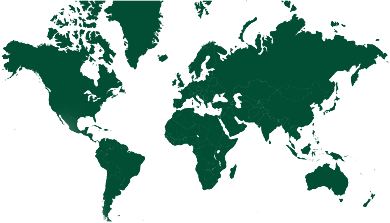Software
2020 • Athena Infonomics EquiServe
EquiServe is a digital platform designed to facilitate equitable, safe, and sustainable citywide sanitation services. It assists public sector leaders, utilities, and decision-makers in analyzing different service models, financial flows, and investment plans. The tool supports City-Wide Inclusive Sanitation (CWIS) principles by focusing on equity, safety, and sustainability across the entire sanitation chain, including both sewered and non-sewered systems. EquiServe enables scenario modelling for a 10-year period, helping stakeholders compare costs, tariffs, and outcomes of various interventions, including resource recovery aspects. It is user-friendly, adaptable to urban contexts, and supports evidence-based decision-making.
Recovered Materials & Products
Waste Streams
Confirmed countries
Germany


What is this tool intended for?
EquiServe is intended to support decision-makers in improving city-level sanitation outcomes by enabling the systematic planning, modelling, and evaluation of interventions. It emphasizes equity, financial and environmental sustainability, and safety, addressing the challenges of fragmented governance and market dynamics.
How does this tool work?
EquiServe applies CWIS principles through a structured digital platform that integrates an eight-component framework. The tool allows users to assess hardware choices for sanitation systems, distribute sanitation coverage based on income groups, and analyze various service delivery models, including public, private, and household-based approaches. Additionally, it provides a comprehensive cost analysis, covering both capital (CAPEX) and operational (OPEX) expenditures, while also considering financing mechanisms and revenue structures.
Beyond the financial and infrastructural aspects, EquiServe accounts for demand-side factors that influence service uptake and behavior. Users input baseline data, create intervention scenarios, and run simulations that project outcomes over a 10-year period. The tool then generates insights on equity, safety, and sustainability, which are presented through an interactive dashboard, facilitating informed decision-making.
Who might use this tool and with which types of stakeholders?
EquiServe is designed for a range of users involved in sanitation planning, governance, and service delivery. Municipal utilities and regulators can use it to assess sanitation service coverage and investment needs, while city service authorities and planners can apply it to evaluate the feasibility of different service models. NGOs and development organizations can use the tool to align sanitation initiatives with CWIS principles, ensuring equitable and sustainable interventions.
Additionally, policymakers and sanitation sector leaders can leverage EquiServe to design financial mechanisms, set tariffs, and develop policies that support long-term sanitation improvements. Researchers and academics can utilize the tool for analyzing financial flows and investment scenarios in urban sanitation systems, contributing to evidence-based decision-making.
What stages of a process can this tool support?
EquiServe is useful across multiple stages of sanitation service planning and implementation. It plays a critical role in the planning phase by identifying priority interventions and assessing alternative service models. In the decision-making stage, the tool enables stakeholders to compare different investment scenarios, weighing financial implications and long-term sustainability.
The tool also supports performance monitoring by tracking sanitation service outcomes over time, helping utilities and planners adjust their strategies as needed. Additionally, EquiServe assists with tariff and financial assessments by evaluating the affordability and financial viability of different pricing structures and subsidy mechanisms.
What skills, capabilities, and resources are required to use this tool?
Using EquiServe effectively requires a combination of technical expertise, data availability, and digital infrastructure. Users should have a basic understanding of financial modeling and service delivery frameworks to interpret the tool’s outputs and scenarios effectively. Access to baseline data on sanitation infrastructure, service costs, and financing mechanisms is also essential to ensure accurate projections and meaningful insights.
Facilitation skills may be necessary, particularly when multiple stakeholders are involved in scenario development and analysis. Trained personnel can guide decision-makers through the tool’s functionalities, helping them navigate various intervention options. As a browser-based platform, EquiServe requires internet connectivity, making digital infrastructure a fundamental prerequisite for its application.
Where can this tool be used?
EquiServe is designed for urban settings in low- and middle-income countries where sanitation planning, investment, and governance are priorities. It is adaptable to different city contexts, including small and large urban areas.
Case examples of where this tool has been used
EquiServe has been successfully applied in various cities to support sanitation planning and financial decision-making. In Lusaka, Zambia, it has been used to develop business models aimed at improving service equity and financial sustainability, in a multi-stakeholder process including among others the Lusaka Water Supply and Sanitation Company. In Kampala, Uganda, the Kampala Capital City Authority applied EquiServe to align sanitation investments with CWIS principles, ensuring a more inclusive and sustainable approach. These case studies demonstrate the tool’s ability to facilitate informed decision-making in different urban contexts.
Get the Tool
EquiServe is a free, browser-based platform accessible via user registration. It can be accessed at the link below.
https://www.equiserve.io/
Learn more
Introductory video to Equiserve
https://www.youtube.com/watch?v=fThc2hzrDoo
Technologies
Themes
Assessment
Financing and investment
Policy and regulation
Stakeholder engagement
Performance monitoring